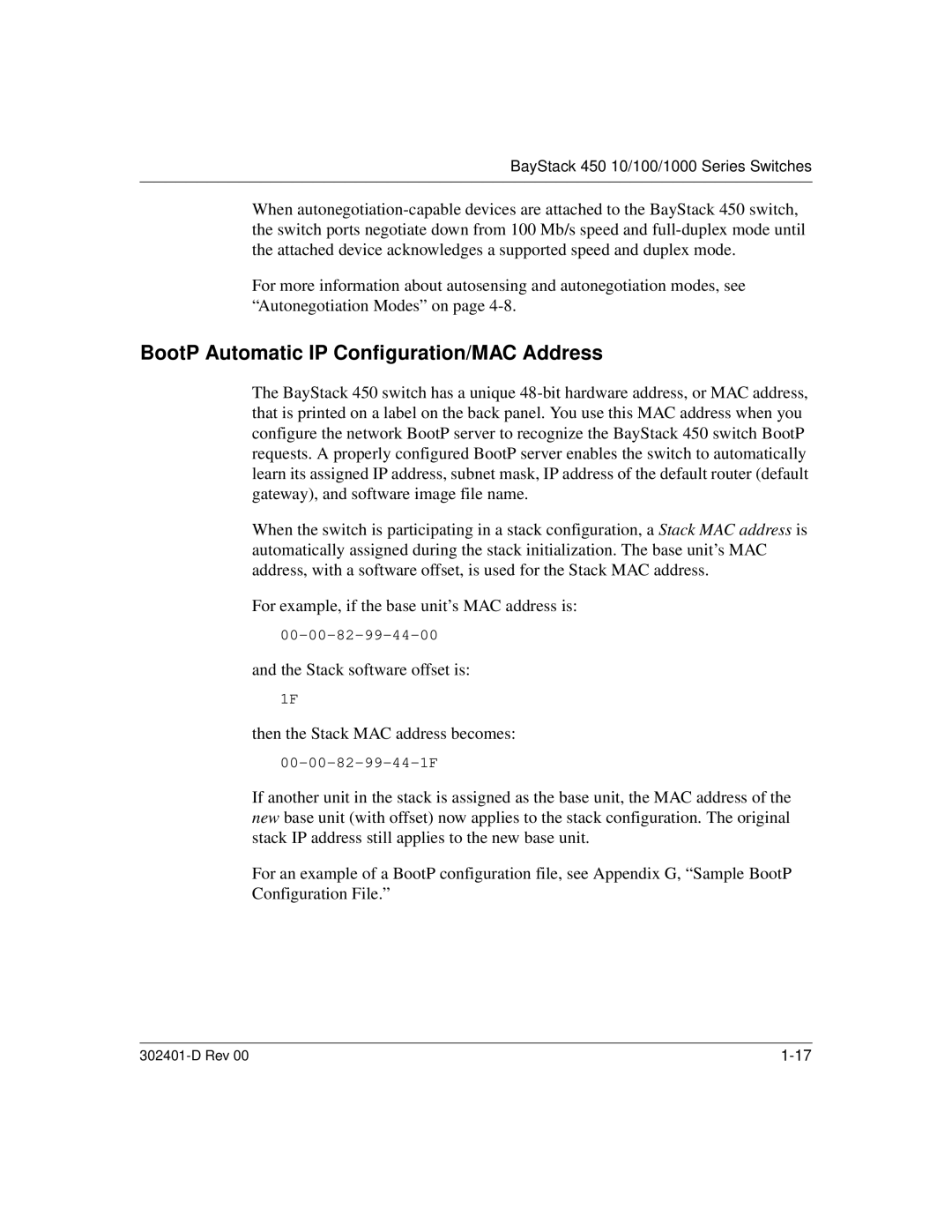
BayStack 450 10/100/1000 Series Switches
When
For more information about autosensing and autonegotiation modes, see “Autonegotiation Modes” on page
BootP Automatic IP Configuration/MAC Address
The BayStack 450 switch has a unique
When the switch is participating in a stack configuration, a Stack MAC address is automatically assigned during the stack initialization. The base unit’s MAC address, with a software offset, is used for the Stack MAC address.
For example, if the base unit’s MAC address is:
and the Stack software offset is:
1F
then the Stack MAC address becomes:
If another unit in the stack is assigned as the base unit, the MAC address of the new base unit (with offset) now applies to the stack configuration. The original stack IP address still applies to the new base unit.
For an example of a BootP configuration file, see Appendix G, “Sample BootP Configuration File.”
|
